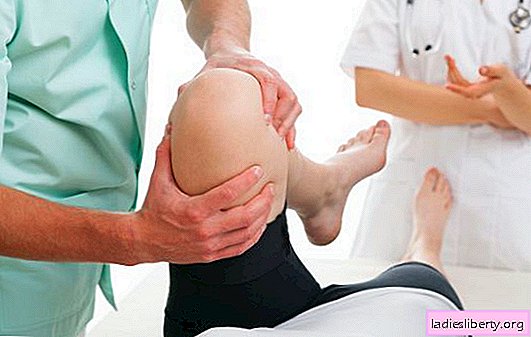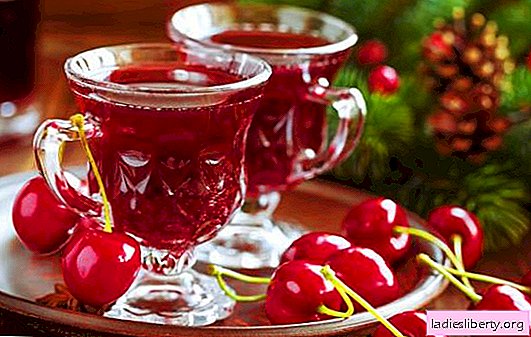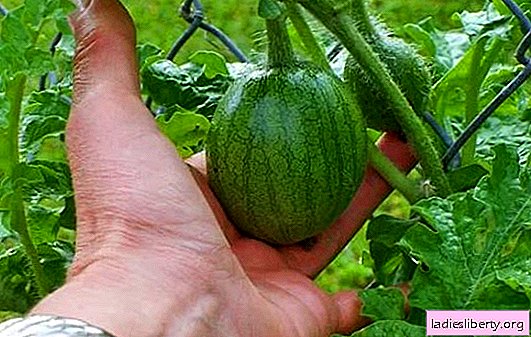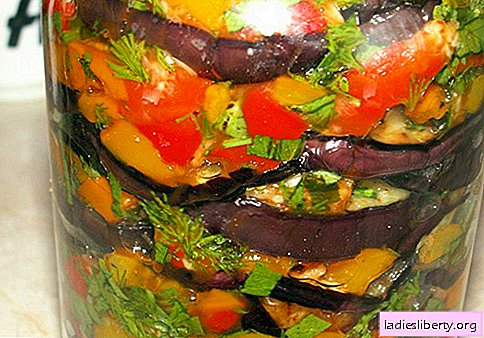
The knee is one of the most complex and large joints of the human body. Constant tension, trauma, sprain, and the natural aging process can cause joint pain that stabilizes tendons, ligaments, or muscles. If severe knee pain occurs after an accident or fall, patients should immediately consult a doctor, and in acute cases, a surgeon.
The mechanism of development of knee pain
Osteoarthrosis is a degenerative joint disease. Untreated arthrosis can lead to the destruction of cartilage, which will increase the friction of the bones against each other. Knee pain associated with arthrosis usually occurs after prolonged periods of rest. In the process of osteoarthrosis, pain usually continues to increase and even occur during periods of rest. The development of the disease and the perception of pain varies from patient to patient.
The meniscus is a two-component crescent-shaped cartilage that is present in the inner and outer parts of the knee joint. The term "meniscopathy" is used to indicate damage to the meniscus that is not caused by trauma. Sudden rotations during work or exercise can cause the meniscus to rupture.
Folk remedies for pain in the knees relieve pain and inflammation. However, most methods do not act on a specific cause, but on a common symptom. If untreated, the disease can progress and worsen the patient’s health.
Folk remedies for knee pain: alternative methods
1. Moisten a swab with urine and apply to an injured or sore knee 3 times a day.
Doctor's comment: urine is the waste of the body that contains water, minerals, end products of protein metabolism, acids and other substances. Urea is used in evidence-based medicine to treat certain skin diseases. In healthy people, urine in the bladder is not infected. However, at the beginning of bladder emptying, it may be infected with commensals living in the urethra.
There is a risk that urine may be infected with bacteria that additionally cause inflammation in the affected areas of the skin (E. coli, Chlamydia or gonococcus). The introduction of urine into an open wound can cause sepsis - blood poisoning. An extremely dangerous recipe that can be fatal.
2. Dip a gauze dressing in iodine and apply on a sore knee 2 times a day for 10 minutes.
Doctor's comment: Care must be taken when handling iodine, because direct contact with the skin can cause injury. Iodine vapor is very irritating to the eyes. The concentration of iodine in the air should not exceed 1 mg / m3. When mixed with ammonia, it can form nitrogen triiodide (triiodoamine), which is extremely sensitive and can explode unexpectedly.
Long-term use of iodine-containing substances enhances the synthesis of thyroid hormones, which disrupt the normal functioning of the body. In patients, basal metabolic rate, appetite, thirst increase, weight loss, general weakness, heat intolerance, nervousness and heart problems are observed. Iodine is suitable for disinfection, but it does not relieve pain, contrary to common misconceptions.
3. Drink 2-4 ml of kerosene 3 times a day.
Doctor's comment: Kerosene is a flammable and viscous yellow liquid with a characteristic odor. At temperatures above 37 ° C explosive mixtures may form in the air. Kerosene is a mixture of various petroleum coals. For this reason, physical properties may vary with different compositions.
The substance can be ingested orally, dermally and rectally in humans. It slightly irritates the respiratory tract and skin. After oral administration, the patient experiences nausea, diarrhea, vomiting, and abdominal pain. Inhalation causes headache, confusion, and dizziness.
The effect on the skin is due to the local dehydrating effect. The fluid also degreases the skin. Repeated or prolonged contact can cause dermatitis. Folk remedies for pain in the knees with kerosene are dangerous to health and should not be used either locally or orally.
4. Mix 20 ml of apple cider vinegar with 100 ml of sunflower oil and water. Soak a swab and apply to a sore spot for 10 minutes.
Doctor's comment: in one of the studies conducted on diabetics, there was an improvement in the body's response to insulin when taking apple cider vinegar. However, other studies show that excess consumption can be unhealthy. Local application does not affect either the structural or functional state of the knee joint. The recipe is useless.
Folk remedies for pain in the knees: herbal medicine
1. Tuberous roots of the plant are dried in the open sun for 4-5 days. Then grind into powder and prepare a thick extract. Moisten a gauze dressing with extract and apply on the knee for the whole day.
Doctor's comment:the plant is used for maintenance therapy for osteoarthritis. Due to the high concentration of bitter substances, the devil's claws are used as a choleretic and appetite stimulating agent.
In 1980, Commission E collected and analyzed existing scientific knowledge and experience about this plant. She makes a distinction between guaranteed effect (scientifically proven) and unverified claims obtained from folk medical experience. Clinical studies have shown that the devil's claws relieve musculoskeletal pain, but can cause serious side effects: dermatitis, degreasing of the skin, and sensitivity disorders. The potential risk from the plant outweighs the benefit.
2. Grind elecampane, mix with 300 ml of hot water and let it brew for a day. Moisten a gauze dressing and apply on a painful knee.
Doctor's comment: Elecampane contains a small amount of essential oil and a high concentration (19 - 45%) of inulin. Some substances (sesquiterpene lactones) can cause allergic contact dermatitis. High concentrations of lactones can cause vomiting and diarrhea. When applied to the skin, most patients experience irritation and increased pain. The recipe is not only useless, but also can aggravate existing pain in the knee.
3. Spread turpentine oil on the knee and wrap with a gauze bandage or bandage. Repeat the procedure for 3 to 7 days.
Doctor's comment: turpentine oil consists of pinene, camphene, β-fellandren, δ-3-karen and limonene. Turpentine oil obtained from pine trees has an irritating skin and antiseptic effect, therefore it is used for rheumatic diseases.
With prolonged exposure, however, painful inflammation of the skin occurs, as well as ulcerative changes and deep tissue destruction. The skin damaging effect is due to the presence of delta-3-karen. Bronchospasm can also be enhanced by the use of oil. The potential beneficial effect of the plant is not worth its side effects.
4. Put a lot of straw in the bandage, and then wrap it around the knee. Leave overnight and repeat the procedure for 3-4 days.
Doctor's comment:"straw" is a collective term for dry stalks and leaves from corn, oilseeds or legumes. Applying straw to affected areas of the skin or for pain in the knees will not bring any benefit. It lacks active substances that have an anti-inflammatory or analgesic effect. The recipe is useless.
Folk remedies for knee pain: magnetotherapy
1. The application of static magnets.
Doctor's comment:In a 2002 report by the National Science Foundation, it was shown that magnetotherapy has no scientific basis. The claims of many suppliers of magnetic therapy are based on pseudoscientific data and are not supported by scientific results or clinical studies. The magnets used create an insufficiently strong magnetic field, so they cannot affect muscles, blood, bones or other organs.
Some manufacturers of magnetotherapy devices claim that the magnetic field improves blood circulation by interacting with the iron contained in hemoglobin. The assumption does not take into account the fact that iron interacts with magnetic fields only when it is in a crystalline solid state. The iron in the body is in liquid form, and therefore is unable to interact with magnetic fields.
Folk remedies for pain in the knees either cause many side effects, or are ineffective and financially expensive. A patient with knee pain is advised to consult a local physician, as the symptom may indicate a more serious cause: rheumatoid arthritis or other autoimmune diseases.











